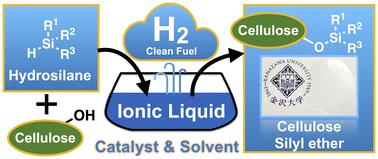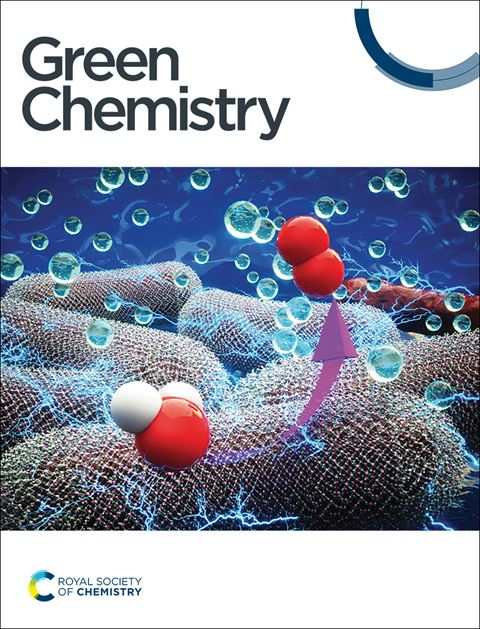Dehydrogenative silylation of cellulose in ionic liquid†
IF 9.3
1区 化学
Q1 CHEMISTRY, MULTIDISCIPLINARY
引用次数: 0
Abstract
A new homogenous silylation method of cellulose is developed by mixing it with monohydrosilane in an ionic liquid. In this concise reaction with high atom economy, the ionic liquid acts as both the solvent and catalyst, and the only formal by-product generated is the clean fuel of molecular hydrogen.

离子液体中纤维素的脱氢硅化反应†
在离子液体中,将纤维素与单氢硅烷混合,提出了一种纤维素均相硅化的新方法。在这种简洁、原子经济性高的反应中,离子液体既充当溶剂又充当催化剂,产生的唯一正式副产品是分子氢这一清洁燃料。
本文章由计算机程序翻译,如有差异,请以英文原文为准。
求助全文
约1分钟内获得全文
求助全文
来源期刊

Green Chemistry
化学-化学综合
CiteScore
16.10
自引率
7.10%
发文量
677
审稿时长
1.4 months
期刊介绍:
Green Chemistry is a journal that provides a unique forum for the publication of innovative research on the development of alternative green and sustainable technologies. The scope of Green Chemistry is based on the definition proposed by Anastas and Warner (Green Chemistry: Theory and Practice, P T Anastas and J C Warner, Oxford University Press, Oxford, 1998), which defines green chemistry as the utilisation of a set of principles that reduces or eliminates the use or generation of hazardous substances in the design, manufacture and application of chemical products. Green Chemistry aims to reduce the environmental impact of the chemical enterprise by developing a technology base that is inherently non-toxic to living things and the environment. The journal welcomes submissions on all aspects of research relating to this endeavor and publishes original and significant cutting-edge research that is likely to be of wide general appeal. For a work to be published, it must present a significant advance in green chemistry, including a comparison with existing methods and a demonstration of advantages over those methods.
 求助内容:
求助内容: 应助结果提醒方式:
应助结果提醒方式:


